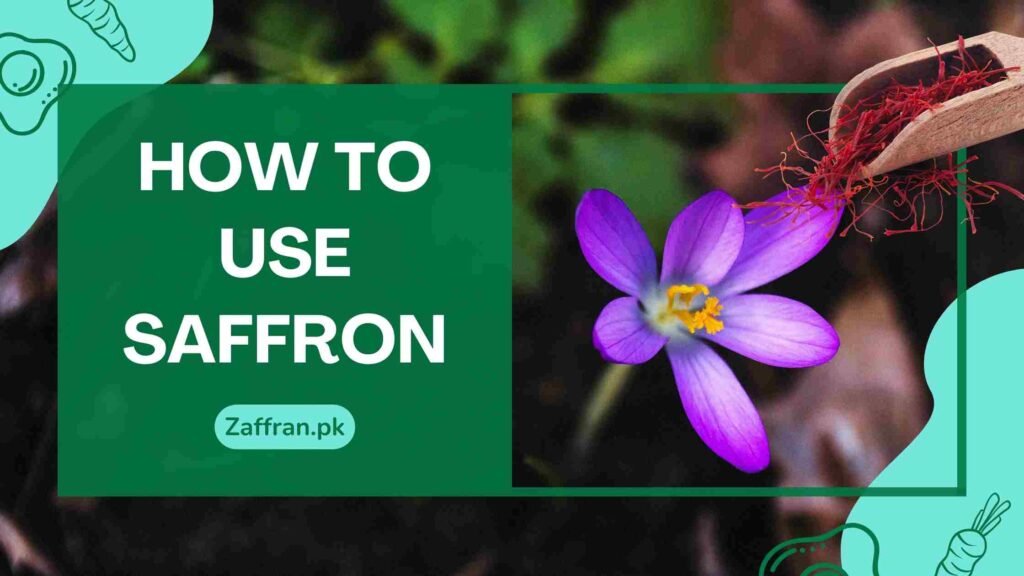How to Use Saffron: Understanding the Basics
Before diving into the diverse applications of saffron, it’s essential to grasp the fundamentals of using this precious spice. Let’s start by addressing some common questions about saffron and how to make the most of its delightful properties.
What is Saffron, and How is it Harvested?
Saffron is the stigma of the Crocus sativus flower and is painstakingly hand-harvested during a short window of time in autumn. Each flower produces only three stigmas, which are carefully plucked by skilled laborers. The stigmas are then dried to create the saffron threads we know and love.
How to Use Saffron Threads?
To use saffron, soak a few threads in warm water, milk, or broth for about 15-20 minutes before adding them to your recipe. This allows the saffron’s vibrant color and flavor to infuse into the liquid, enhancing the overall taste of your dish.
How Much Saffron Should You Use?
Saffron is potent, and a little goes a long way. For most recipes, a pinch or a few threads (about 20-30) are enough to add the desired depth of flavor and color. Remember, excessive use can overpower the dish.
Can You Use Saffron Powder Instead of Threads?
Yes, saffron powder is a convenient alternative to threads, especially when uniform distribution is required. Use 1/2 teaspoon of saffron powder in place of approximately 75-80 saffron threads.
How to Store Saffron?
To preserve saffron’s freshness and potency, store it in an airtight container in a cool, dark place. Avoid exposing it to direct sunlight or heat, as this can degrade its quality over time.
Is Saffron Safe for Everyone?
Saffron is generally safe for consumption by most individuals when used in culinary amounts. However, pregnant women and those with specific medical conditions should consult a healthcare professional before using saffron as a supplement.
Exploring Culinary Delights: How to Use Saffron in Cooking
Saffron’s mesmerizing hue and delicate taste make it an indispensable ingredient in various dishes. Here are some delightful ways to incorporate saffron into your culinary creations:
1. Saffron-infused Rice Dishes
Enhance the aroma and taste of rice by adding saffron during cooking. Prepare a sumptuous saffron-infused Pilaf or the classic Spanish dish “Paella” for an indulgent experience.
2. Creamy Saffron Sauces
Create luscious and aromatic sauces by infusing saffron into cream, butter, or vegetable broth. Drizzle these velvety sauces over grilled chicken, seafood, or pasta for a luxurious treat.
3. Saffron-infused Beverages
Add a touch of luxury to your beverages by steeping saffron threads in hot water or milk. Savor the delicate flavors of saffron-infused tea, lattes, or even cocktails for a truly exotic experience.
4. Delectable Saffron Desserts
Elevate your desserts with the alluring essence of saffron. From saffron-infused ice cream to aromatic rice pudding, the possibilities are endless.
5. Saffron in Baked Goods
Experiment with saffron in your baking endeavors. Whether it’s saffron buns, cookies, or cakes, the spice will add a unique twist to your favorite treats.
The Healing Power of Saffron: Medicinal Uses and Benefits
Beyond its culinary appeal, saffron has been treasured for its therapeutic properties for centuries. Explore the medicinal uses and health benefits of saffron:
1. Relieves Depression and Anxiety
Saffron contains compounds that may help alleviate symptoms of depression and anxiety. Studies suggest that saffron extract can be as effective as some antidepressant medications.
2. Promotes Heart Health
The antioxidants in saffron have a positive impact on heart health. They may lower cholesterol levels, regulate blood pressure, and reduce the risk of cardiovascular diseases.
3. Supports Cognitive Function
Saffron’s bioactive compounds have been linked to improved cognitive function and memory retention. Including saffron in your diet may help support brain health.
4. Eases Menstrual Symptoms
Saffron has been used in traditional medicine to alleviate menstrual cramps and discomfort. Its anti-inflammatory properties may help reduce pain and improve mood during menstruation.
5. Boosts Immunity
The potent antioxidants in saffron help strengthen the immune system, making it more effective in fighting off infections and illnesses.
Frequently Asked Questions (FAQs)
Q: Can saffron be used in savory dishes?
A: Absolutely! Saffron’s unique flavor pairs well with a wide range of savory dishes, including soups, stews, and sauces.
Q: Is saffron suitable for vegetarians and vegans?
A: Yes, saffron is entirely plant-based and can be enjoyed by vegetarians and vegans alike.
Q: Can I use saffron in sweet dishes?
A: Yes, saffron adds a delightful touch to sweet dishes, such as desserts, cakes, and pastries.
Q: How long does saffron stay fresh?
A: Properly stored, saffron can retain its quality for up to two years.
Q: Does saffron have any side effects?
A: While saffron is safe for most people when used in culinary amounts, excessive consumption may cause certain side effects, such as nausea or dizziness.
Q: Can saffron be used in traditional medicine?
A: Yes, saffron has been used in traditional medicine for various therapeutic purposes, such as improving digestion and promoting skin health.
Conclusion
In conclusion, saffron is a fascinating spice with a rich history and a plethora of uses. Whether you’re exploring its culinary versatility or harnessing its medicinal benefits, saffron’s allure is undeniable. By incorporating saffron into your culinary creations and enjoying its therapeutic effects, you can truly unlock the secrets of this exquisite spice.
Now, armed with a comprehensive understanding of how to use saffron, it’s
